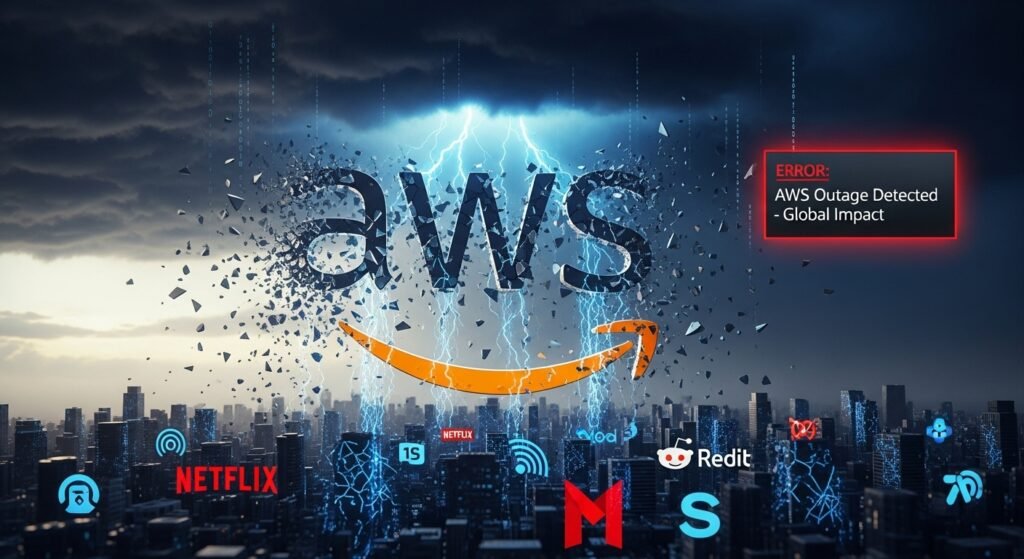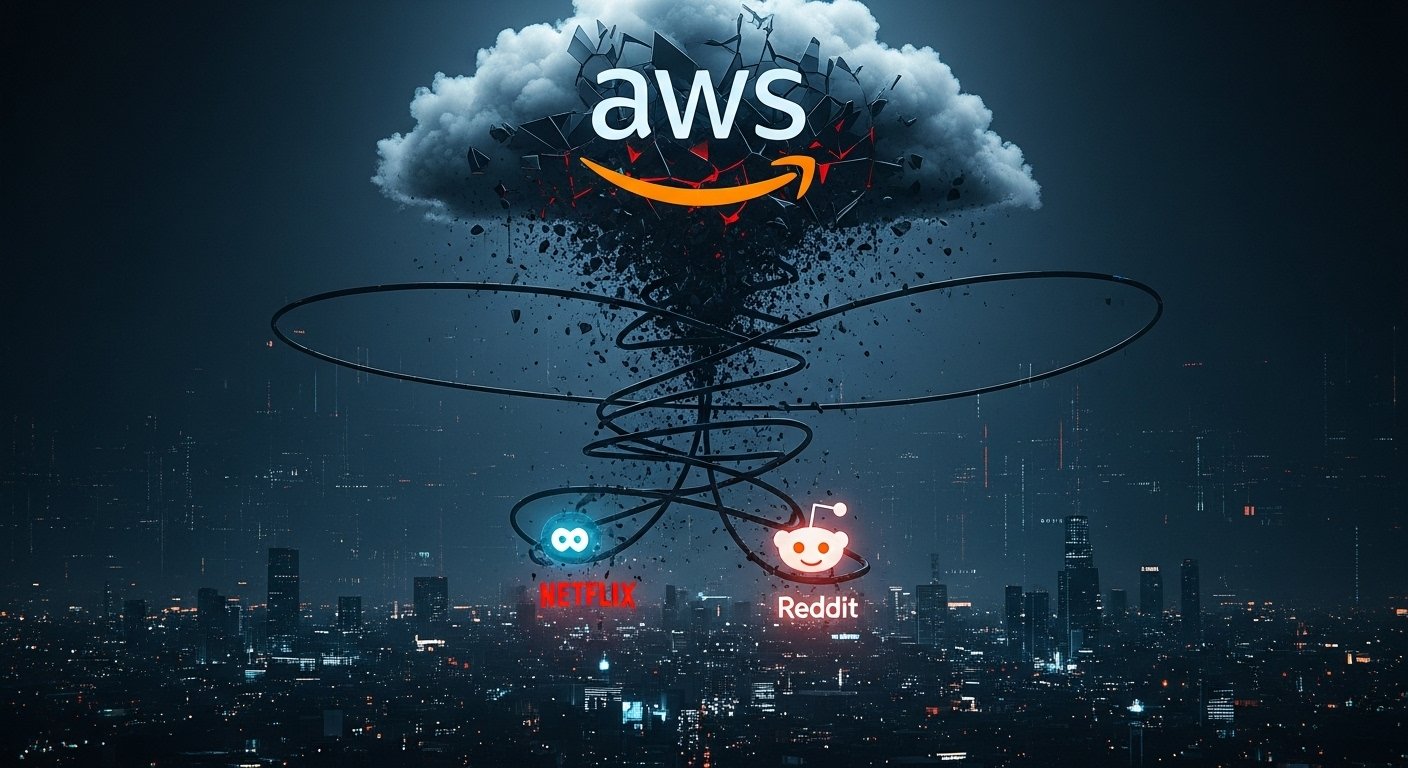A Day the Internet Stood Still
AWS Outage: On October 21, 2025, the world experienced one of the most widespread digital outages in history. Major online platforms, including Netflix, Reddit, PlayStation, Roblox, Fortnite, Robinhood, Coinbase, Venmo, Snapchat, and Disney+, simultaneously went offline.
In total, more than 2,500 companies were affected, leading to what many experts are calling the most catastrophic cloud outage ever recorded. The common link between these digital giants? Amazon Web Services (AWS) — the backbone of much of today’s internet infrastructure.

How the AWS Outage Unfolded
AWS operates an estimated 350 massive data centers worldwide, providing cloud computing power to some of the largest platforms on the planet. However, when AWS falters, the ripple effects can be devastating.
At approximately 9:07 p.m. Eastern Time, AWS reported increased error rates and latencies across multiple services within its US-East-1 region — one of its oldest and most critical data clusters, located in Northern Virginia.
This region plays a vital role in powering countless applications across North America, making it the beating heart of the internet economy. When it goes down, the consequences are global.
The Root Cause: A DNS Configuration Failure
According to AWS’s incident report, the issue stemmed from a misconfigured DNS subsystem responsible for resolving the addresses of API endpoints — particularly for services like Amazon DynamoDB.
The Domain Name System (DNS) acts like the internet’s phone book, translating domain names into IP addresses. When this process fails, applications cannot locate their databases or servers.
As a result, services that rely heavily on AWS — from social media apps to online payment systems — suddenly found themselves unable to function. Even after AWS corrected the DNS issue within a few hours, residual problems persisted for much longer due to the backlog of serverless tasks such as Lambda functions and message queues.
The Chain Reaction Across the Internet
The AWS outage didn’t just take down entertainment platforms. Essential services such as food delivery apps, online payment systems, and e-commerce platforms also went offline.
Users around the world reported being unable to order food, send money, or access critical services. Businesses dependent on AWS’s cloud infrastructure faced significant downtime, and customer frustration grew rapidly.
Even news outlets like The New York Times were affected, temporarily limiting public access to real-time information during the crisis.
Why Centralized Cloud Dependency Is a Growing Risk
This incident serves as a stark reminder of the risks associated with relying too heavily on a single cloud provider. AWS’s dominance in the cloud computing market has made it a critical point of failure for the global digital economy.
While AWS has a robust architecture designed for redundancy, the sheer scale of interdependent services means even minor misconfigurations can lead to widespread outages.
Experts argue that multi-cloud strategies — where companies distribute workloads across multiple providers like Google Cloud, Microsoft Azure, and others — could help mitigate such risks in the future.

Lessons for Developers and Businesses
For developers and enterprises, the AWS outage of 2025 highlights the need for:
- Redundancy and backup planning across multiple regions or providers.
- Robust monitoring systems to detect anomalies before they cascade.
- Disaster recovery protocols to ensure business continuity during unexpected outages.
Even high-profile startups and data-driven platforms have faced similar challenges in recent years. As cloud dependency deepens, resilience planning is no longer optional — it’s essential.
Watch this video:
A Wake-Up Call for the Cloud Era
The “Great AWS Outage of 2025” will likely go down as a turning point in internet history. While AWS quickly addressed the technical fault, the incident revealed how fragile the web’s interconnected systems truly are.
As the world continues to move further into the cloud, this event underscores a critical truth: the internet is only as strong as the infrastructure it depends on.
Author’s Note: The outage of 2025 was not merely a technical glitch — it was a reminder of how deeply our digital lives are tied to a handful of centralized systems. Ensuring a more distributed and resilient cloud ecosystem may be the key to preventing the next global blackout.
